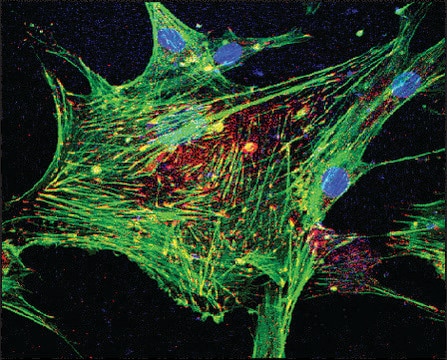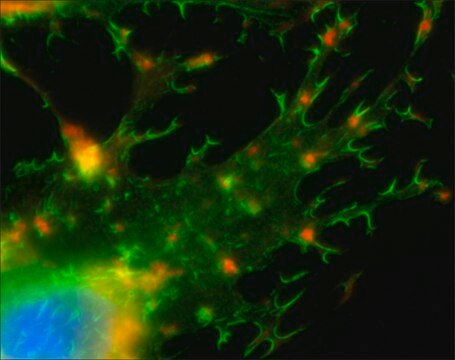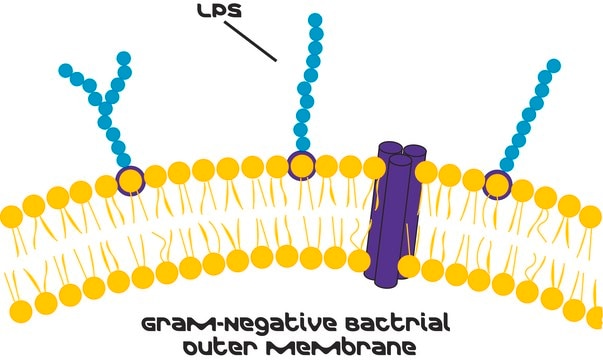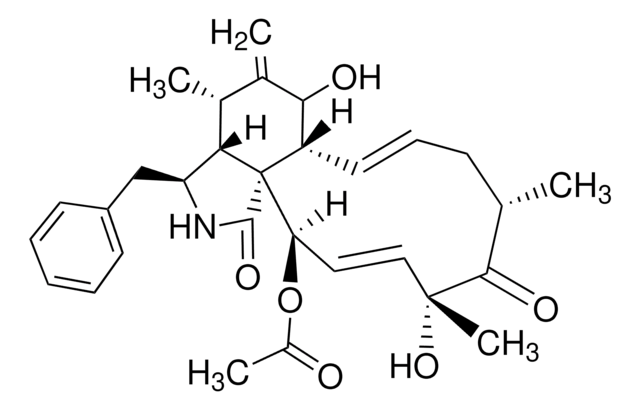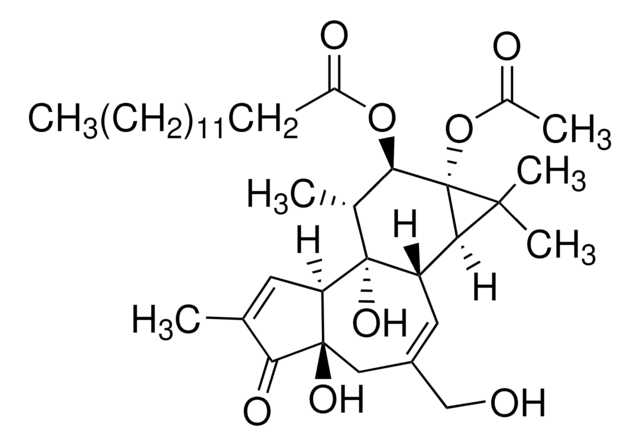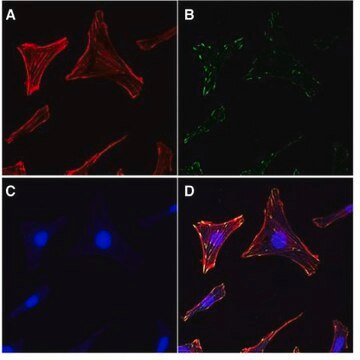P2141
Phalloidin Peptide
≥90% (HPLC), powder
Synonym(s):
28-(2,3-dihydroxy-2-methylpropyl)-18-hydroxy-34-(1-hydroxyethyl)-23,31-dimethyl-12-thia-10,16,22,25,27,30,33,36-octazapentacyclo[12.11.11.03,11.04,9.016,20]hexatriaconta-3(11),4,6,8-tetraene-15,21,24,26,29,32,35-heptone
About This Item
Recommended Products
product name
Phalloidin from Amanita phalloides, ≥90%
biological source
Amanita phalloides
Quality Level
Assay
≥90%
form
powder
SMILES string
CC(O)C1NC(=O)C(C)NC(=O)C(CC(C)(O)CO)NC(=O)C2Cc3c(SCC(NC1=O)C(=O)N4CC(O)CC4C(=O)NC(C)C(=O)N2)[nH]c5ccccc35
InChI
1S/C35H48N8O11S/c1-15-27(47)38-22-10-20-19-7-5-6-8-21(19)41-33(20)55-13-24(34(53)43-12-18(46)9-25(43)31(51)37-15)40-32(52)26(17(3)45)42-28(48)16(2)36-30(50)23(39-29(22)49)11-35(4,54)14-44/h5-8,15-18,22-26,41,44-46,54H,9-14H2,1-4H3,(H,36,50)(H,37,51)(H,38,47)(H,39,49)(H,40,52)(H,42,48)
InChI key
KPKZJLCSROULON-UHFFFAOYSA-N
Looking for similar products? Visit Product Comparison Guide
Related Categories
General description
Application
- As a supplement in PEM buffer and dimethyl sulfoxide (DMSO).
- As a drug.
- In immunohistochemistry to stain F-actin.
Biochem/physiol Actions
Signal Word
Danger
Hazard Statements
Precautionary Statements
Hazard Classifications
Acute Tox. 2 Oral
WGK
WGK 3
Flash Point(F)
Not applicable
Flash Point(C)
Not applicable
Certificates of Analysis (COA)
Search for Certificates of Analysis (COA) by entering the products Lot/Batch Number. Lot and Batch Numbers can be found on a product’s label following the words ‘Lot’ or ‘Batch’.
Already Own This Product?
Find documentation for the products that you have recently purchased in the Document Library.
Customers Also Viewed
Our team of scientists has experience in all areas of research including Life Science, Material Science, Chemical Synthesis, Chromatography, Analytical and many others.
Contact Technical Service